Upwork Talent Scout
Client Onboarding Experience
The Talent Scout client intake flow is Upwork’s onboarding process that gathers client needs and signals to help recruiters find the right talent. This service saves clients time and addresses the challenge of finding high-value talent not available in Upwork’s Marketplace.
Recruiters in Talent Scout act as intermediaries, assisting clients in finding pre-screened, skill-certified candidates for roles in development, design and creative, marketing, and product management.
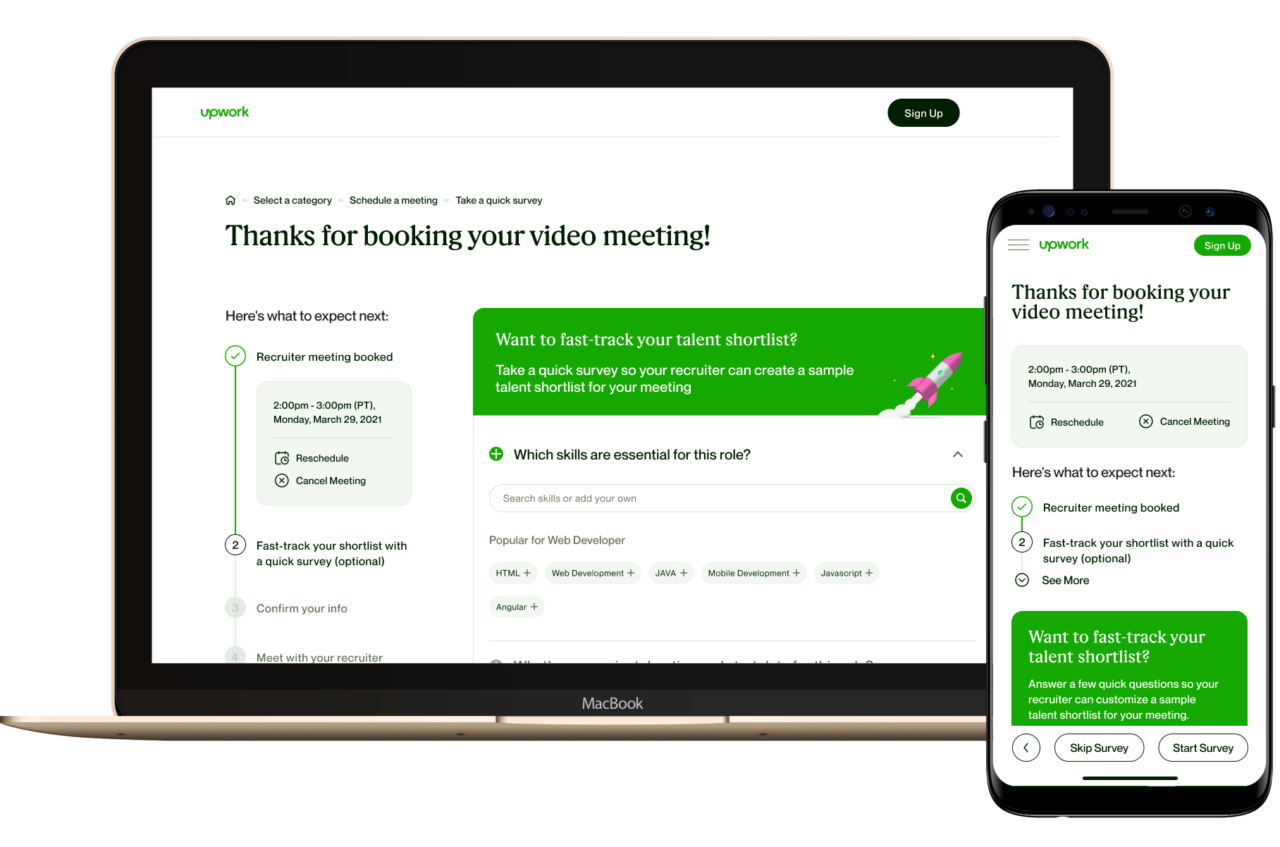
Role
Design lead
Collaborator
PMs, Engs, Data analysts, Content designer
Design Process
Pain points and problem statement > Ideation > Solution/concepts exploration > User testing > Design and content iteration > E2E experience mapping out > Design system update
Duration
5 weeks
Tools
Figma, User testing.com, Miro
Outcome
Increase user adoption, better engagement, and an 73% improvement in client conversion. Reduced the no-show rate from 40% to 16%
Business Pain Point
We faced issues with user engagement (qualified leads: clients who attend the first meeting).
40% of scheduled meetings resulted in no-shows, losing potential qualified customers.
Approximately 20% drop-off rate on the intake step form-sign up page.
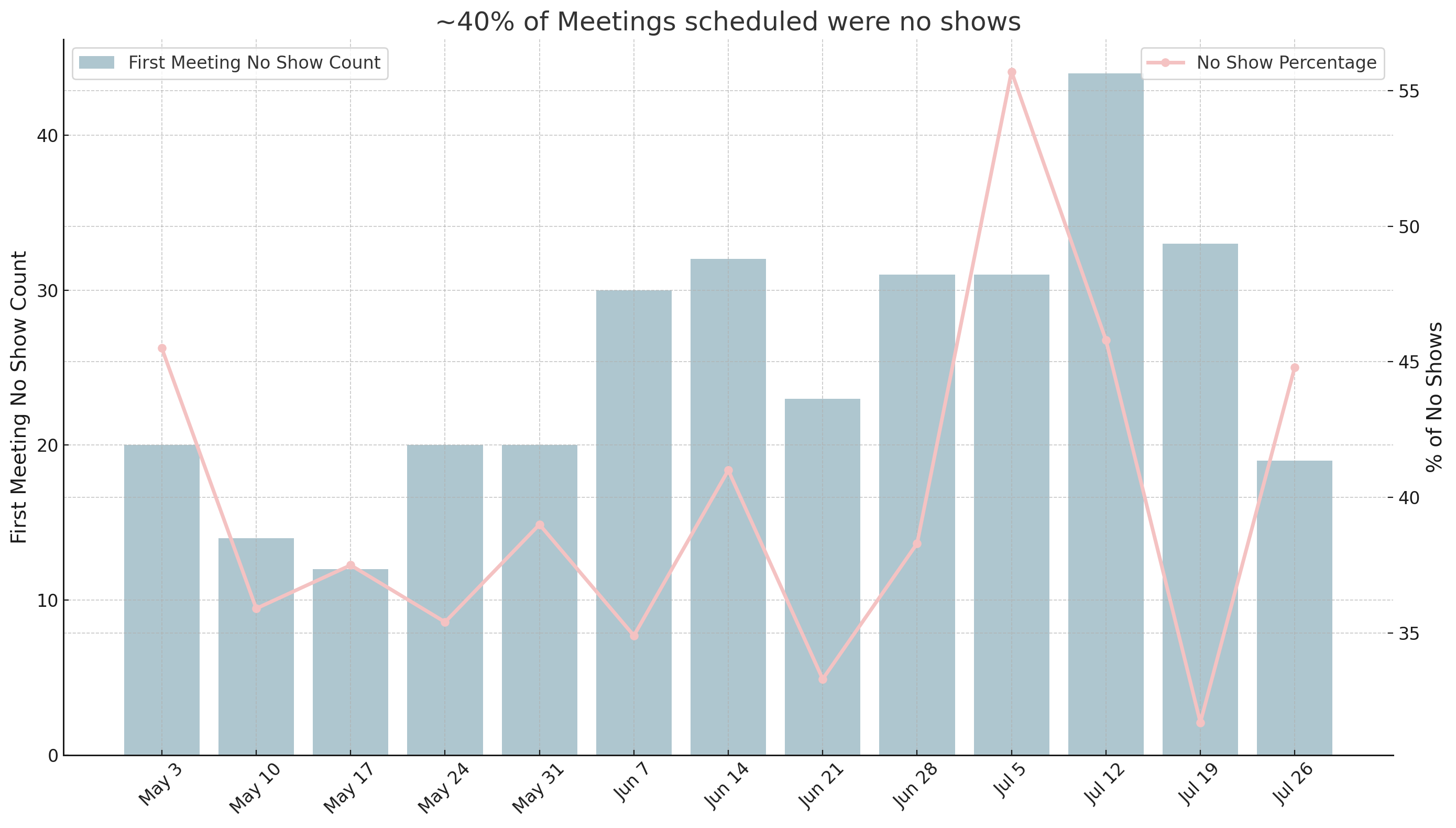
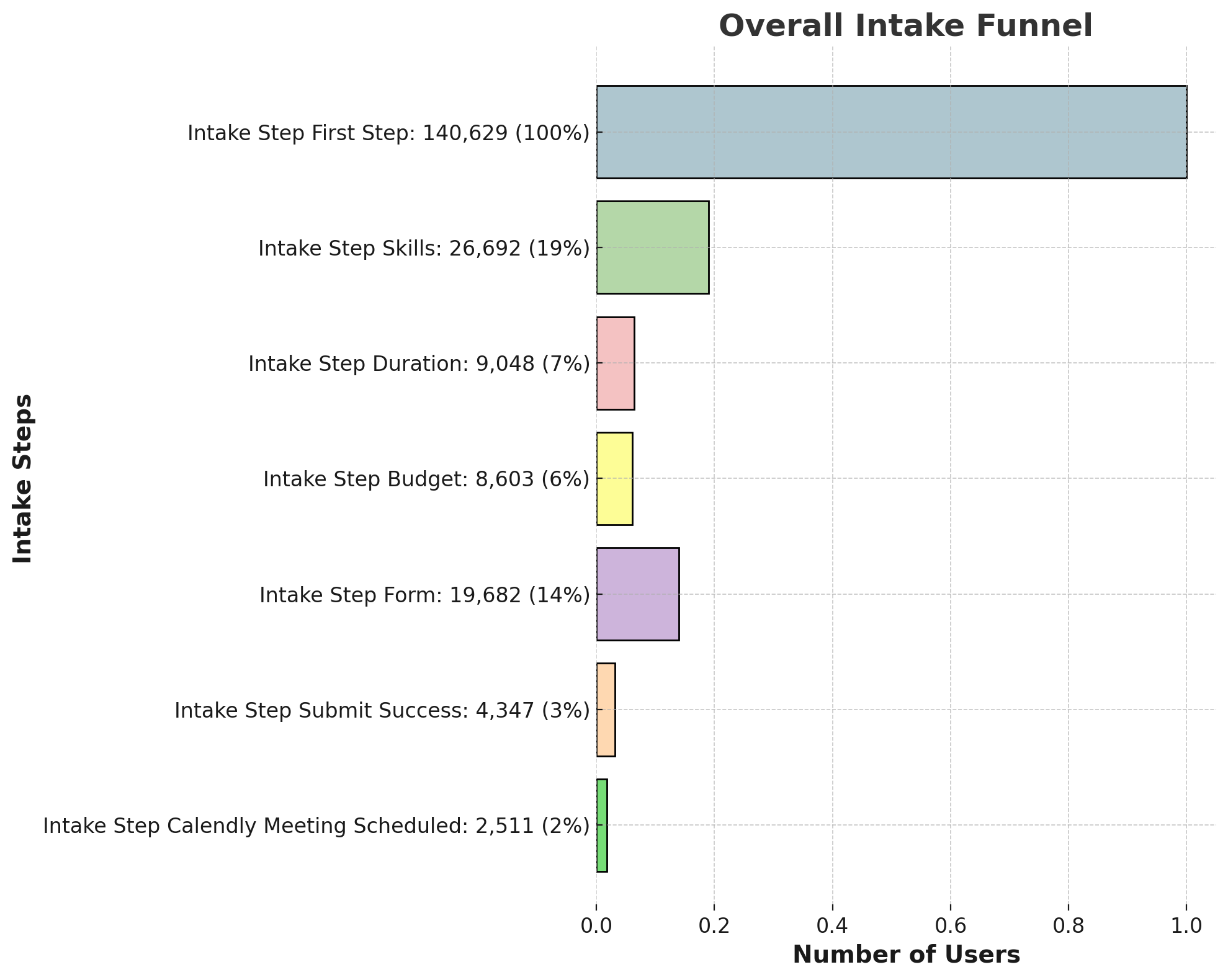
Business Goal + Hypotheses
The stakeholders met to address business pain points and review the goals.
- Increase client sign-up conversion
- Reduce drop-off rates during sign-up and intake flow
- Boost first meeting conversion
- Cut no-show rates
We brainstormed hypotheses and solutions to boost conversion and retention.
- Signup is burdensome for clients
- Clients drop off due to long wait for first meeting
- Intake experience is not engaging and intuitive
Understand Users’ Problems
To better understand user behaviors, I interviewed 8 potential clients. Our findings revealed two distinct personas with different user problems.
Persona A
- Hard to hire talent who is outside the client’s area of expertise
- Hard to hire for a time-bound project
- Hard to find someone who meets their budget as a small business
- Hard to quickly find the best match
Persona B
- It’s easy to find talent who have a specific hard skill, but I don’t have the expertise to evaluate their soft skills
- It’s not that easy to hire talent in a reasonable time frame
- I hope someone can help me to screen and pre-vet the talent on both soft and hard skills
Understand Experience Issues
To understand the root causes of decreasing no-show rates and retention, I conducted usability tests on usertesting.com with several questions:
Intake Experience:
- Experience with Talent Scout
- Met, fell below, or exceeded expectations
- Hiring timeframe
- Opinion on assigned recruiter
- Suggestions for improvement
Dropoff Experience:
- Reason for not continuing with Talent Scout
- Alternative solutions used (external or different Upwork service)
- Areas for Talent Scout improvement

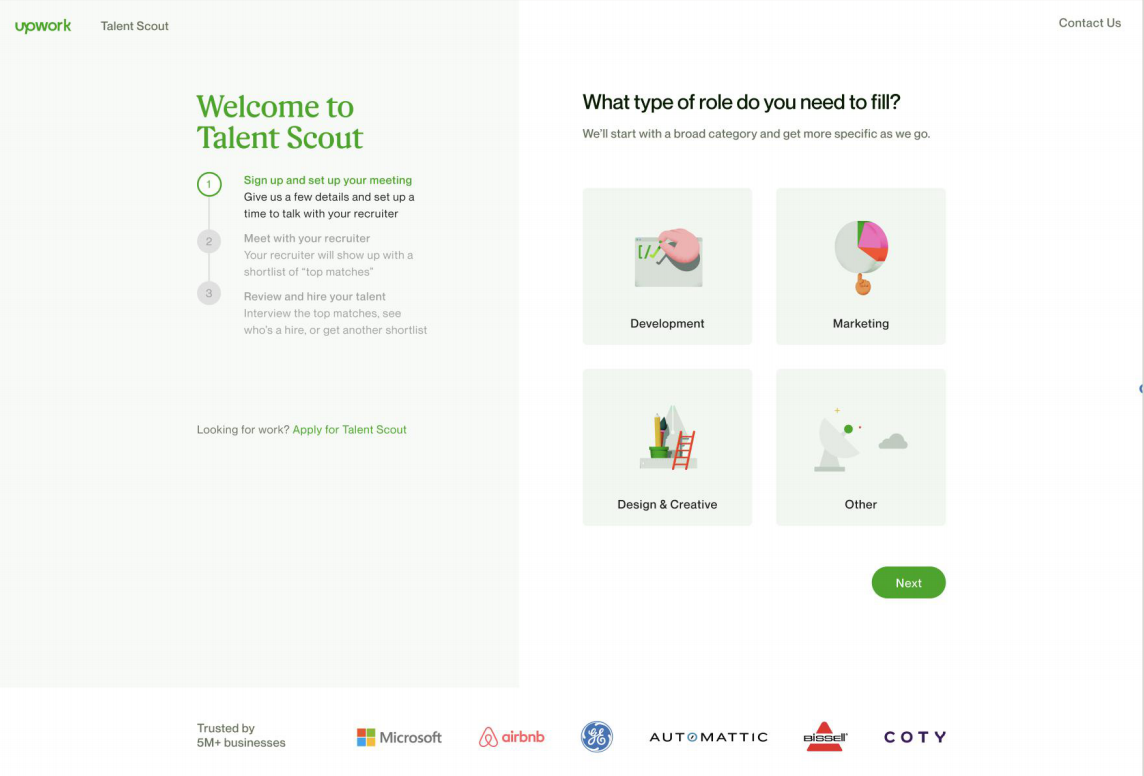
- Left and right columns increase cognitive load
- Low-domain clients unsure of role categories
- No back button to return to Talent Scout landing page

- Non-tech-savvy clients unsure of needed roles/skills
- Clients wanting a website may not know they need an HTML developer
- Suggest search corrections for misspellings

- Clients unaware of remaining steps
- Willing to provide more info if it helps the recruiter
- Need visual confirmation for added skills, the selected skills are added to the same “cloud”

- Too much info required
- Clients unclear on why info is needed outside of development
- Illustration doesn’t match non-development categories

- Users lose interest/patience with excessive info requests
- Some drop off due to phone number requirement

- Small businesses worry Talent Scout favors big companies due to logo placement
- Want clarity on first meeting benefits
- Mobile users missed date and time picker initially
- Clients want to share more about the role, doubting recruiter’s ability to find the right talent
Ideation
> User Journey Map
We compiled the data and created a journey map with stakeholders to address problems and brainstorm solutions for the end-to-end experience. The team identified and voted on key HMW questions, with the top one being:
“How might we collect as much information from the client as possible before the recruiter call, without it feeling too cumbersome?”
Potential solutions:
- Only show the primary value prop to reduce cognitive load
- Provide options to shortcut questions for non-tech-savvy clients (e.g., “Just want to talk to someone”)
- Keep the client curious and excited about the possibilities
- Gather enough info to present a shortlist of candidates at the first meeting
- Craft a compelling value proposition and motivation to encourage clients to schedule their appointments and show up on time
- Add the progress bar showing where they are in the process
The user journey map clarifies specific user problems at each phase and suggests opportunities and solutions.
> Sprintathon
We invited stakeholders, including the engineering team, to a “sprintathon” to discuss primary problems and potential solutions. We broke down user problems into three parts:
Problem 1: Sign-up page is the biggest drop-off point due to its cumbersome nature and lack of motivation for users to fill it out.
Solutions:
- Simplify the sign-up process
- Provide auto-fill for country
- Pre-fill email and name
Problem 2: Low-domain clients don’t know what role they need to hire for.
Solutions:
- Allow users to type anything and use a data science service to match to the most relevant role
- Guide users to another service if their role doesn’t fall under our categories
Problem 3: Clients want to know how and what they should pay for talent.
Solutions:
- Provide min-max hourly rate range
- Notify clients if their budget is lower than TS range
- Display message: “Estimated hourly rate range is based on your role, skills, location”
Low-fidelity Prototype
I listed, visualized, and prioritized potential solutions with stakeholders. The primary solutions after discussion and voting are:
- Add questions on budget, hourly rate, and timezone to shorten waiting time for best-match talent (Persona A & B)
- One-click “skip all” CTA to let low-domain clients (Persona A) talk to a recruiter directly
- Real talent profile samples to engage clients based on their info (Persona A & B)
- Simplify sign-up by removing phone number and company name, and adding a pre-fill function
High-fidelity Prototype
Think-aloud Test and Iterations

Reorder intake flow from category -> intake option -> create account -> scheduler to category -> scheduler -> intake option -> create account to match clients’ mental model/expectations (get help from recruiter).

Merge input fields (name, company name, email) into the meeting scheduler. This helps clients understand why the info is needed and auto-fills the sign-up form afterward.
 Add a summary page as a “waiting room” for optional info.
Add a summary page as a “waiting room” for optional info.
Keep users focused on intake questions by removing the interactive map and profile sample (show them later) to reduce cognitive load.

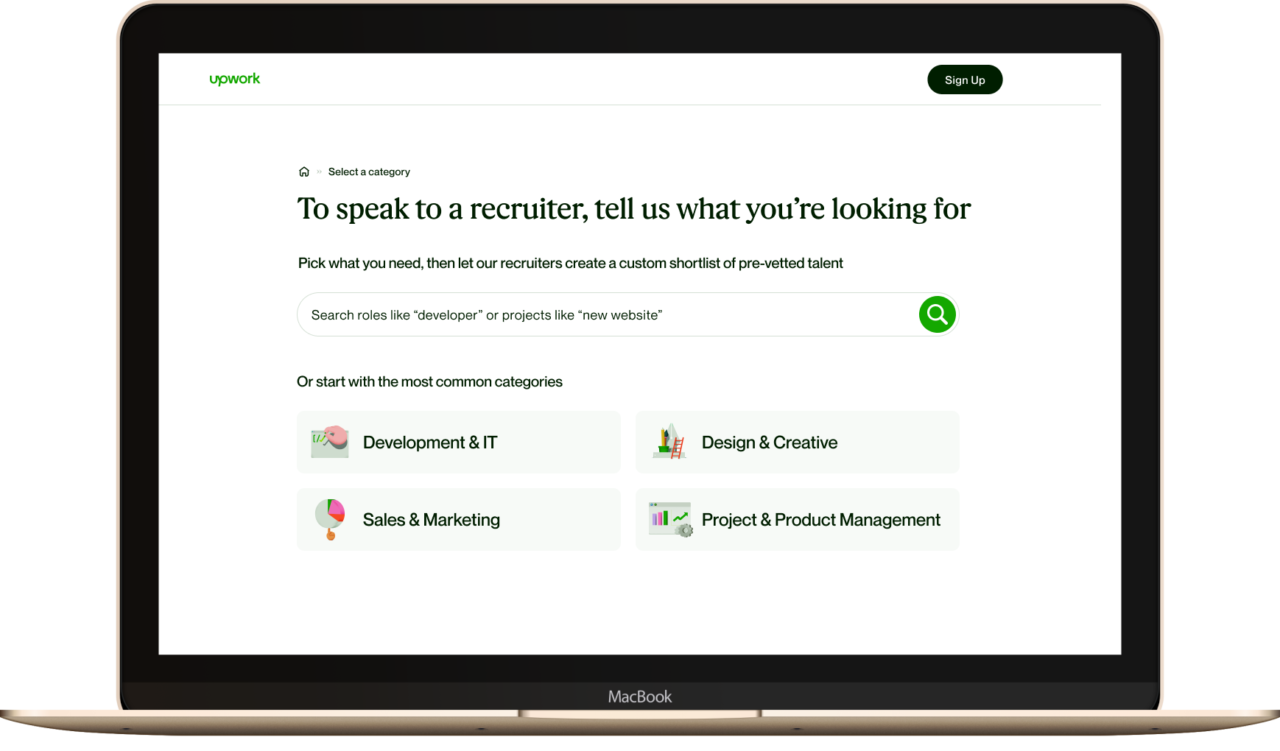
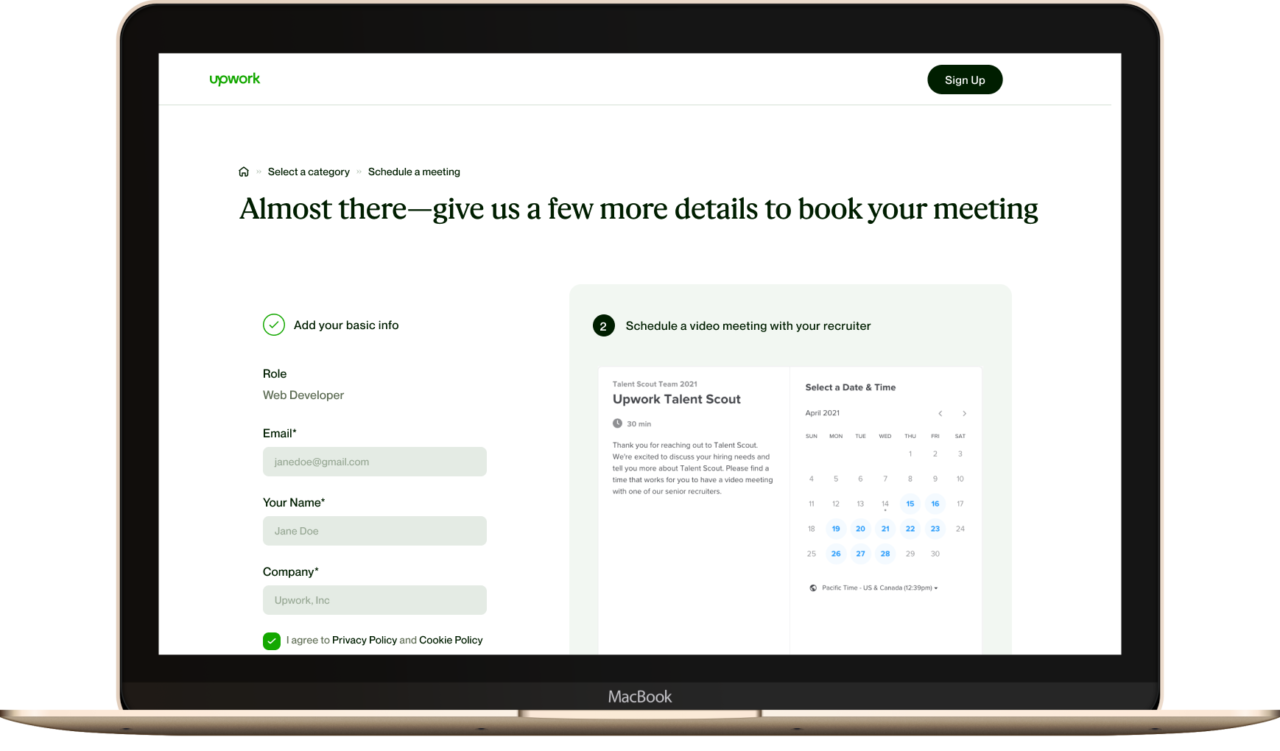

Conclusion and takeaways
Upwork’s focus on improving user experience really paid off. They saw a big jump in user adoption and engagement, which is awesome. But the real highlight? A 73% improvement in client conversion rates. And the new experience reduces the no-show rate from 40% to 16%. Besides, the recruiter’s work efficiency of finding the right talent has been enhanced from 3 days to 1 day. That’s huge! It just goes to show how important it is to keep users happy and engaged. Upwork’s commitment to making things better is clearly working, setting them up as a top player in the freelance market.
- Inviting the engineering team to the loop earlier would be a great approach to talk about the technology limitation and feasibility
- Fork experiences for different user types are essential in the onboarding experience to retain the user
- The hypothesis should be built on the data or be test proved
- We need to find a balance between providing enough content to intrigue users and eliminating some content to reduce their cognitive load
Like what you see? Hit me up :)









